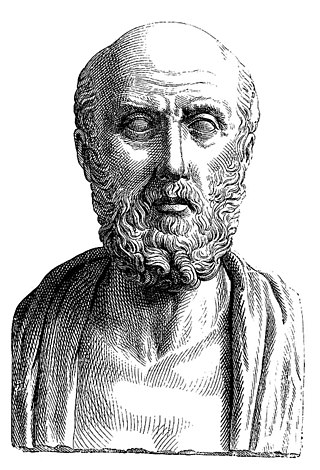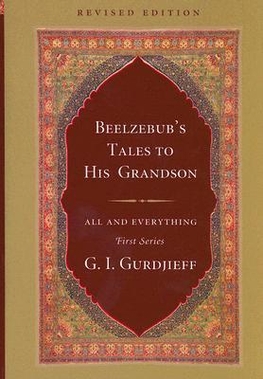
The Bible is a collection of religious texts or scriptures, some, all of which, or a variant of which, are held to be sacred in Christianity, Judaism, Samaritanism, Islam, and many other religions. The Bible is an anthology, a compilation of texts of a variety of forms, originally written in Hebrew, Aramaic, and Koine Greek. These texts include instructions, stories, poetry, and prophecies, and other genres. The collection of materials that are accepted as part of the Bible by a particular religious tradition or community is called a biblical canon. Believers in the Bible generally consider it to be a product of divine inspiration, but the way they understand what that means and interpret the text varies.

The Book of Mormon is a religious text of the Latter Day Saint movement, which, according to Latter Day Saint theology, contains writings of ancient prophets who lived on the American continent from 600 BC to AD 421 and during an interlude dated by the text to the unspecified time of the Tower of Babel. It was first published in March 1830 by Joseph Smith as The Book of Mormon: An Account Written by the Hand of Mormon upon Plates Taken from the Plates of Nephi. The Book of Mormon is one of the earliest unique writings of the Latter Day Saint movement. The denominations of the Latter Day Saint movement typically regard the text primarily as scripture and secondarily as a record of God's dealings with ancient inhabitants of the Americas. The majority of Latter Day Saints believe the book to be a record of real-world history, with Latter Day Saint denominations viewing it variously as an inspired record of scripture to the lynchpin or "keystone" of their religion. Some Latter Day Saint academics and apologetic organizations strive to affirm the book as historically authentic through their scholarship and research, but mainstream archaeological, historical, and scientific communities have discovered little to support the existence of the civilizations described therein, and do not consider it to be an actual record of historical events.
Chinese classic texts or canonical texts or simply dianji (典籍) refers to the Chinese texts which originated before the imperial unification by the Qin dynasty in 221 BC, particularly the "Four Books and Five Classics" of the Neo-Confucian tradition, themselves a customary abridgment of the "Thirteen Classics". All of these pre-Qin texts were written in classical Chinese. All three canons are collectively known as the classics.

The Tao Te Ching is a Chinese classic text written around 400 BC and traditionally credited to the sage Laozi, though the text's authorship, date of composition and date of compilation are debated. The oldest excavated portion dates back to the late 4th century BC, but modern scholarship dates other parts of the text as having been written—or at least compiled—later than the earliest portions of the Zhuangzi.

Hippocrates of Kos, also known as Hippocrates II, was a Greek physician of the classical period who is considered one of the most outstanding figures in the history of medicine. He is traditionally referred to as the "Father of Medicine" in recognition of his lasting contributions to the field, such as the use of prognosis and clinical observation, the systematic categorization of diseases, or the formulation of humoral theory. The Hippocratic school of medicine revolutionized ancient Greek medicine, establishing it as a discipline distinct from other fields with which it had traditionally been associated, thus establishing medicine as a profession.

The history of religion refers to the written record of human religious feelings, thoughts, and ideas. This period of religious history begins with the invention of writing about 5,200 years ago. The prehistory of religion involves the study of religious beliefs that existed prior to the advent of written records. One can also study comparative religious chronology through a timeline of religion. Writing played a major role in standardizing religious texts regardless of time or location, and making easier the memorization of prayers and divine rules. A small part of the Bible involves the collation of oral texts handed down over the centuries.
The New Testament (NT) is the second division of the Christian biblical canon. It discusses the teachings and person of Jesus, as well as events in first-century Christianity. The New Testament's background, the first division of the Christian Bible, is called the Old Testament, which is based primarily upon the Hebrew Bible; together they are regarded as sacred scripture by Christians.
The Old Testament (OT) is the first division of the Christian biblical canon, which is based primarily upon the 24 books of the Hebrew Bible, or Tanakh, a collection of ancient religious Hebrew and occasionally Aramaic writings by the Israelites. The second division of Christian Bibles is the New Testament, written in the Koine Greek language.

The Septuagint, sometimes referred to as the Greek Old Testament or The Translation of the Seventy, and often abbreviated as LXX, is the earliest extant Greek translation of the Hebrew Bible from the original Hebrew. The full Greek title derives from the story recorded in the Letter of Aristeas to Philocrates that "the laws of the Jews" were translated into the Greek language at the request of Ptolemy II Philadelphus by seventy-two Hebrew translators—six from each of the Twelve Tribes of Israel.

A scribe is a person who serves as a professional copyist, especially one who made copies of manuscripts before the invention of automatic printing.
The historicity of the Bible is the question of the Bible's relationship to history—covering not just the Bible's acceptability as history but also the ability to understand the literary forms of biblical narrative. One can extend biblical historicity to the evaluation of whether or not the Christian New Testament is an accurate record of the historical Jesus and of the Apostolic Age. This tends to vary depending upon the opinion of the scholar.

Zhuang Zhou, commonly known as Zhuangzi, was an influential Chinese philosopher who lived around the 4th century BCE during the Warring States period, a period of great development in Chinese philosophy, the Hundred Schools of Thought. He is credited with writing—in part or in whole—a work known by his name, the Zhuangzi, which is one of the foundational texts of Taoism.

Beelzebub's Tales to His Grandson or An Objectively Impartial Criticism of the Life of Man is the first volume of the All and Everything trilogy written by the Greek-Armenia mystic G. I. Gurdjieff. The All and Everything trilogy also includes Meetings with Remarkable Men and Life Is Real Only Then, When 'I Am'.
Martin Roger Seymour-Smith was a British poet, literary critic, and biographer.

The Babylonian Chronicles are a loosely-defined series of about 45 tablets recording major events in Babylonian history.

Jehovah is a Latinization of the Hebrew יְהֹוָהYəhōwā, one vocalization of the Tetragrammaton יהוה (YHWH), the proper name of the God of Israel in the Hebrew Bible/Old Testament. The Tetragrammaton יהוה is considered one of the seven names of God in Judaism and a form of God's name in Christianity.
Rhapsodomancy is an ancient form of divination performed by choosing through some method a specific passage or poem from which to ascertain information.

The origins, authenticity, and historicity of the Book of Mormon have been subject to considerable criticism from scholars and skeptics since it was first published in 1830. The Book of Mormon is a sacred text of the Latter Day Saint movement, which adherents believe contains writings of ancient prophets who lived on the American continent from approximately 2200 BC to AD 421. It was first published in March 1830 by Joseph Smith as The Book of Mormon: An Account Written by the Hand of Mormon upon Plates Taken from the Plates of Nephi, who said that it had been written in otherwise unknown characters referred to as "reformed Egyptian" engraved on golden plates that he personally transcribed. Contemporary followers of the Latter Day Saint movement typically regard the text primarily as scripture, but also as a historical record of God's dealings with the ancient inhabitants of the Americas.

The I Ching or Yi Jing, usually translated Book of Changes or Classic of Changes, is an ancient Chinese divination text that is among the oldest of the Chinese classics. Originally a divination manual in the Western Zhou period (1000–750 BC), the I Ching was transformed over the course of the Warring States and early imperial periods (500–200 BC) into a cosmological text with a series of philosophical commentaries known as the "Ten Wings". After becoming part of the Five Classics in the 2nd century BC, the I Ching was the subject of scholarly commentary and the basis for divination practice for centuries across the Far East, and eventually took on an influential role in Western understanding of East Asian philosophical thought.
The earliest known precursor to Hebrew, an inscription in the Paleo-Hebrew alphabet, is the Khirbet Qeiyafa Inscription, if it can be considered Hebrew at that early a stage.











